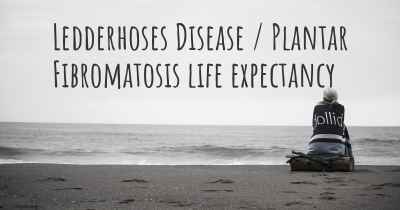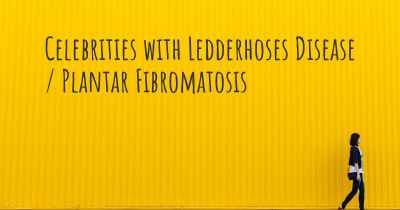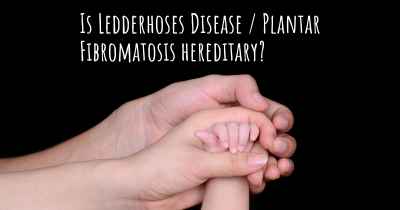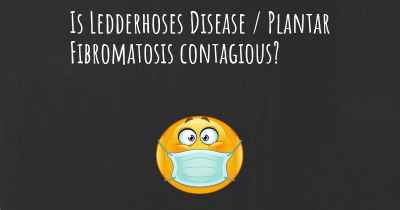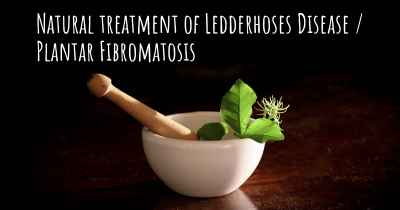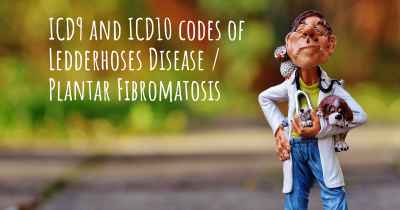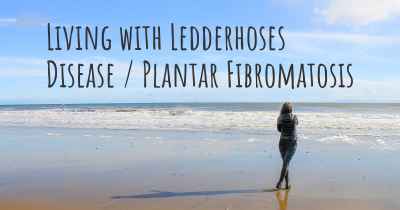What are the best treatments for Ledderhoses Disease / Plantar Fibromatosis?
See the best treatments for Ledderhoses Disease / Plantar Fibromatosis here
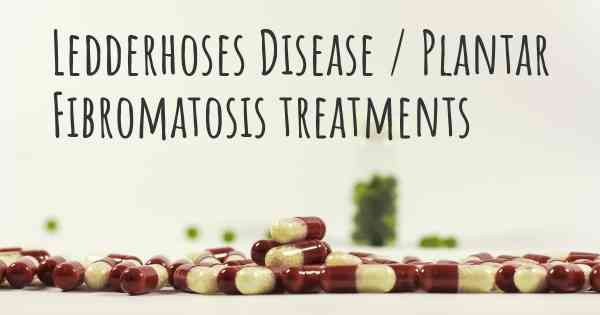
Treatments for Ledderhose's Disease / Plantar Fibromatosis
Ledderhose's Disease, also known as Plantar Fibromatosis, is a rare condition characterized by the development of benign nodules or lumps in the plantar fascia, a thick band of tissue that runs along the bottom of the foot. These nodules can cause pain, discomfort, and difficulty in walking. While there is no known cure for Ledderhose's Disease, there are several treatment options available to manage the symptoms and improve the quality of life for individuals affected by this condition.
Conservative Treatments
Conservative treatments are often the first line of defense for Ledderhose's Disease. These non-invasive approaches aim to relieve pain, reduce inflammation, and improve mobility. Some of the commonly used conservative treatments include:
- Physical Therapy: Physical therapy can help improve flexibility, strengthen the foot muscles, and reduce pain. Therapists may use techniques such as stretching exercises, ultrasound therapy, and manual manipulation to alleviate symptoms.
- Orthotic Devices: Custom-made orthotic devices, such as shoe inserts or arch supports, can provide additional support to the foot and help distribute pressure more evenly, reducing discomfort.
- Footwear Modifications: Wearing shoes with proper arch support, cushioning, and a wide toe box can help alleviate pain and prevent further progression of the condition. Avoiding high heels and tight-fitting shoes is also recommended.
- Non-Steroidal Anti-Inflammatory Drugs (NSAIDs): Over-the-counter NSAIDs, such as ibuprofen or naproxen, can help reduce pain and inflammation associated with Ledderhose's Disease. However, long-term use should be monitored by a healthcare professional.
Minimally Invasive Procedures
If conservative treatments fail to provide sufficient relief, or if the condition progresses, minimally invasive procedures may be considered. These procedures aim to remove or shrink the nodules, thereby reducing pain and improving mobility. Some of the commonly used minimally invasive procedures include:
- Needle Aponeurotomy: This procedure involves inserting a needle into the affected tissue to break up the fibrous bands causing the nodules. It is performed under local anesthesia and often provides temporary relief.
- Collagenase Injection: Collagenase is an enzyme that can break down the collagen fibers in the nodules. It is injected directly into the affected area, and over time, it helps soften and shrink the nodules. Multiple injections may be required.
- Cryotherapy: Cryotherapy involves freezing the nodules using liquid nitrogen. This procedure aims to destroy the abnormal tissue and stimulate the growth of healthy tissue. It may require multiple sessions for optimal results.
Surgical Interventions
In severe cases of Ledderhose's Disease, where conservative treatments and minimally invasive procedures have not provided satisfactory results, surgical intervention may be considered. Surgical options aim to remove the nodules and restore normal foot function. Some surgical procedures commonly used for Ledderhose's Disease include:
- Partial Plantar Fasciectomy: This procedure involves removing the affected portion of the plantar fascia, including the nodules. It may be performed using traditional open surgery or minimally invasive techniques.
- Radiotherapy: In some cases, low-dose radiotherapy may be used to reduce the size of the nodules and relieve symptoms. This treatment is typically reserved for individuals who are not suitable candidates for surgery.
Post-Treatment Rehabilitation
Following any treatment, rehabilitation plays a crucial role in optimizing outcomes and preventing recurrence. Physical therapy and exercises are often recommended to improve strength, flexibility, and overall foot function. Compliance with post-treatment rehabilitation protocols is essential for long-term success.
It is important to note that the choice of treatment depends on various factors, including the severity of the condition, individual symptoms, and the patient's overall health. A healthcare professional experienced in treating Ledderhose's Disease can provide personalized recommendations and guide patients through the treatment journey.
